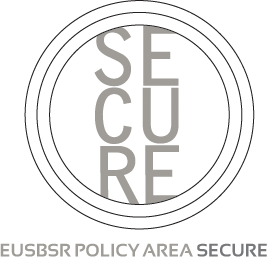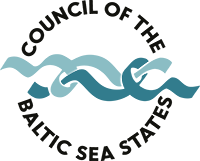About Me
Color is more than just a visual element; it sets the tone, creates environment, and communicates emotions within a space. In recent years, interior design has experienced a significant transformation, the place traditional colour palettes are being replaced with bold, sudden, and personalized hues that push the boundaries of standard design. The evolution of color in interior design reflects each societal shifts and technological advancements, giving rise to unique and experimental approaches to creating spaces. In this article, we will explore how modern interior design is breaking boundaries through the usage of dynamic coloration palettes.
The Power of Color Psychology
The impact of colour on human emotions and habits is well-documented. Totally different shades evoke totally different moods: blue is calming, yellow energizing, and red stimulating. In modern interior design, there is a growing understanding of how color psychology influences both functionality and aesthetics. Designers are actually utilizing coloration not only to enhance the beauty of a space but to actively form the way people feel and work together within it.
For instance, warm tones equivalent to terracotta and amber can create a way of coziness and intimacy in residing rooms, making them good for spaces meant for leisure and conversation. On the other hand, cooler shades like teal and sage green evoke a way of tranquility, which makes them ultimate for bedrooms or dwelling offices, where focus and peace are essential. By careabsolutely choosing and pairing colors, interior designers can assemble environments that cater to the emotional and psychological wants of the inhabitants.
From Neutral to Bold: Breaking Traditional Norms
Prior to now, neutrals like beige, white, and grey dominated interior design schemes. These colours provided a safe and timeless aesthetic, but as interior design evolves, there's been a notable shift toward bolder and more vibrant choices. The boundaries of traditional color palettes are being stretched, with designers embracing unexpected mixtures and vibrant hues that mirror individuality and self-expression.
One of the most significant trends in modern interior design is using high-contrast colour pairings. Vivid and vivid colours reminiscent of mustard yellow, deep blue, and burnt orange are being used in mixture with softer neutrals like ivory and stone gray. This contrast adds drama, creates depth, and injects a way of energy into the space, turning every room into a visual statement.
In addition to high-contrast pairings, using monochromatic coloration schemes has gained popularity. By layering various shades of the identical color, designers create a sophisticated and harmonious look that feels both contemporary and timeless. Whether it's various tones of deep emerald green or subtle gradients of pale pink, monochromatic palettes supply a cohesive aesthetic that is visually appealing and emotionally soothing.
Sustainable Design and Nature-Inspired Palettes
As sustainability becomes a key focus in interior design, nature-inspired coloration palettes have change into increasingly popular. Colors that evoke the natural world—earthy browns, lush greens, ocean blues, and sunny yellows—are being integrated into interior spaces to create a calming, grounded atmosphere. These colors not only join us to nature but additionally align with the rising demand for eco-friendly and sustainable living.
In addition to this, natural supplies akin to reclaimed wood, stone, and bamboo are sometimes paired with these earthy tones to enhance the organic feel. Designers are turning to biophilic design ideas, which purpose to create environments that foster a connection between folks and the natural world. This approach is reflected in the coloration decisions that reflect the colors of forests, deserts, and oceans—promoting well-being and a way of concord in the home.
Technology's Influence: Virtual Palettes and Digital Design
Technology has revolutionized the way designers work, and color palettes aren't any exception. With the advent of virtual tools and digital platforms, designers now have an unprecedented ability to experiment with shade combos and see how they will look in a real-world setting earlier than implementation. Virtual reality (VR) and augmented reality (AR) are making it simpler than ever to test out bold colour choices in a virtual room, offering a risk-free way to discover unconventional ideas.
In truth, some interior designers are turning to digital art and graphic design software to create custom color palettes that reflect the distinctive preferences of their clients. From holographic finishes to futuristic metallics, technology is expanding the color vocabulary of interior design, permitting designers to discover textures and tones that have been once impossible to replicate.
Personalization: Color as a Form of Expression
Ultimately, shade in modern interior design has turn into a form of personal expression. Gone are the days when colour palettes had been dictated by trends or rules. Immediately, individuals have the liberty to decide on colours that resonate with their personality and lifestyle. Whether or not it’s a rich purple accent wall, a teal velvet sofa, or a bold lime green kitchen backsplash, modern interiors are more and more reflecting the unique tastes and preferences of the people who inhabit them.
Designers are embracing this shift toward personalization, providing shoppers more flexibility in selecting colors that make them feel at home. Customizable shade schemes and tailored palettes permit individuals to break free from the limitations of traditional design and create spaces which might be as unique as they are.
Conclusion
The boundaries of coloration in modern interior design are being continually redefined as new trends, technologies, and concepts emerge. Whether it’s through high-distinction palettes, nature-inspired tones, or personalized hues, color isn't any longer just an ornamental element however a robust tool that shapes the way we experience our environments. As interior designers proceed to discover new possibilities, colour will stay at the forefront of design innovation, pushing boundaries and helping to create spaces that aren't only lovely but meaningful.
Location
Occupation





